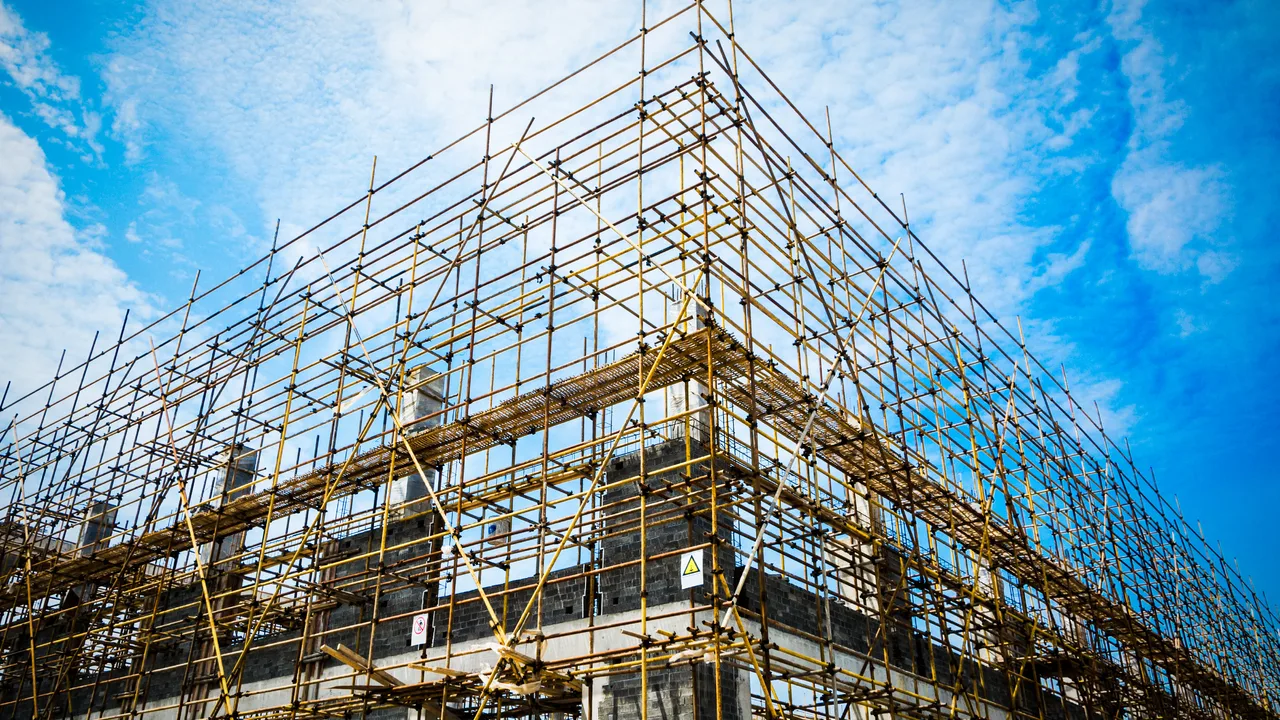In recent years, BIM in construction has redefined how buildings are designed, coordinated, and delivered. By combining 3D modeling, real-time collaboration, and data-driven insights, BIM (Building Information Modeling) serves as a digital foundation for every stage of a construction project—from concept to operation. As the construction industry moves toward smarter and more sustainable methods, understanding the role of BIM has become essential for engineers, architects, and contractors aiming to achieve precision and efficiency in every project.
Introduction to BIM in Construction
Building Information Modeling is a comprehensive digital process that allows all project participants to work from a unified source of truth. Unlike traditional 2D CAD drawings, BIM creates an intelligent 3D model containing detailed information about the building’s geometry, materials, systems, and life cycle performance. This model is shared across stakeholders, ensuring seamless coordination and minimizing misunderstandings.
The growing adoption of BIM in construction has revolutionized the entire project delivery cycle. Through better visualization, clash detection, and improved planning, BIM reduces waste, avoids costly rework, and ensures the project runs on time and within budget. Whether for skyscrapers, infrastructure, or industrial plants, BIM provides the clarity and precision needed in today’s complex construction landscape.
The Evolution of BIM Technology
From Blueprints to Digital Models
The construction sector has come a long way from manual drafting to advanced modeling technologies. Initially, 2D CAD systems were used to produce technical drawings, but they lacked the ability to visualize structures in three dimensions or detect design conflicts. The introduction of BIM in construction bridged this gap by integrating geometric and parametric data within one unified model.
Integration with Modern Tools and Platforms
Modern BIM solutions now extend far beyond 3D modeling. Cloud-based collaboration tools allow multiple teams to access, edit, and review models simultaneously. Architects can work on the same file as structural and MEP engineers, eliminating redundant workflows. Moreover, integration with Virtual Reality (VR) and Augmented Reality (AR) enables immersive visualization—allowing clients and project managers to experience the design before it’s built.
The next generation of BIM involves the creation of digital twins—dynamic, data-driven replicas of physical assets. Unlike static BIM models, digital twins evolve throughout the building’s life cycle, incorporating real-time data from sensors and IoT devices. This enables predictive maintenance, performance optimization, and informed decision-making long after project completion.
Key Benefits of Implementing BIM in Construction
Improved Project Coordination and Collaboration
One of the most significant advantages of BIM lies in its ability to enhance project coordination. All stakeholders—from design consultants to contractors—work from the same digital model. This minimizes conflicts, improves communication, and creates accountability. Instead of exchanging multiple drawing revisions, everyone can view the latest version in real time through cloud-based platforms.
Cost Efficiency and Time Savings
Construction errors are costly, but BIM helps prevent them through clash detection and simulation. Software tools can automatically detect design conflicts—such as overlapping pipes or beams—before construction begins. In addition, accurate quantity take-offs and cost estimation reduce budget overruns. By integrating scheduling (4D BIM) and cost control (5D BIM), project managers can predict the financial and time impact of every design decision.
Enhanced Safety and Risk Management
Safety is a critical factor in construction, and BIM supports proactive risk management. Through simulated site logistics, teams can identify hazards before work begins on-site. Safety training can also be conducted in virtual environments, allowing workers to familiarize themselves with the job site layout and safety protocols. As a result, fewer accidents occur and project downtime decreases.
Sustainability and Lifecycle Management
As sustainability becomes a top priority, BIM plays a vital role in promoting eco-friendly design. Energy modeling tools within BIM software analyze heating, cooling, lighting, and ventilation systems, enabling designers to optimize building performance. Material usage can be tracked to minimize waste, while lifecycle data ensures efficient maintenance post-construction. This integrated approach aligns with green building certifications and long-term operational goals.
Digital Twin and Its Relationship with BIM

The concept of a digital twin builds upon BIM’s capabilities by adding real-time operational data. A digital twin is a virtual replica of a physical structure that updates continuously through sensors, IoT devices, and analytical software. It allows stakeholders to monitor performance, detect anomalies, and plan maintenance with precision.
While BIM focuses on the design and construction phases, digital twins extend into the operational stage. For example, a hospital’s digital twin might collect live data from HVAC systems and occupancy sensors, helping facility managers optimize energy use and comfort. The combination of BIM in construction and digital twin technology enables smarter, data-driven decision-making throughout a building’s lifecycle.
In advanced infrastructure and industrial projects, digital twins are becoming essential for predictive maintenance. By comparing real-world conditions with the BIM model, engineers can anticipate structural wear, detect deviations, and plan interventions before failures occur. This not only enhances safety but also prolongs asset lifespan.
According to Wikipedia, BIM continues to evolve as a cornerstone of digital transformation in the built environment. Its integration with emerging technologies such as AI and IoT signifies that the future of construction is moving toward complete digital interconnectivity.
The Role of BIM in Project Coordination
Coordinating Multidisciplinary Teams
Modern construction projects involve numerous disciplines working together: architectural, structural, mechanical, electrical, and plumbing. BIM ensures that these disciplines collaborate effectively within one ecosystem. Every stakeholder can visualize how their component interacts with others, preventing design overlaps and sequencing conflicts.
Clash Detection and Design Optimization
Through software like Revit and Navisworks, teams can perform clash detection early in the design process. This preemptive step identifies inconsistencies and allows for optimization long before site work begins. The benefits are clear: reduced rework, shorter project duration, and higher construction quality.
Communication and Documentation
In addition to coordination, BIM ensures consistent and transparent communication among all project participants. Every model version, drawing, and change order is recorded automatically within the shared database. This traceability helps project managers maintain documentation integrity, ensuring that everyone refers to the latest approved version.
Cloud-based BIM platforms also simplify information sharing between on-site and off-site teams. Contractors can access updated models through mobile devices, making real-time decisions on the field without delays. For large-scale infrastructure and industrial facilities, this capability drastically improves productivity and minimizes downtime.
Challenges in Adopting BIM
Implementation Costs and Learning Curve
Despite its numerous benefits, implementing BIM in construction comes with certain challenges. One of the main barriers is the initial investment in software, hardware, and staff training. Many small and medium-sized firms struggle to justify the upfront costs, even though the long-term gains are substantial. Additionally, a steep learning curve often discourages traditional engineers or contractors who are used to 2D workflows.
Interoperability and Data Standards
Another significant issue is interoperability. Different BIM platforms may not always communicate efficiently with each other, leading to data loss or model conversion errors. The introduction of open data standards such as IFC (Industry Foundation Classes) and the openBIM initiative aims to overcome these challenges by promoting universal file formats and collaboration protocols.
However, for these standards to be effective, widespread adoption and enforcement are required. Governments, developers, and design firms need to align on data exchange practices to make BIM a truly open and integrated process.
Cultural and Organizational Barriers
BIM adoption requires a major cultural shift within organizations. Traditional project delivery methods often involve siloed communication, where each discipline works independently. BIM promotes collaboration and transparency, which can initially meet resistance from teams unaccustomed to open information sharing. Leadership commitment, change management, and continuous training are key to ensuring smooth transition.
Future Trends of BIM in Construction
Integration with Artificial Intelligence and Machine Learning
The next phase of BIM in construction lies in automation and predictive analytics. Artificial Intelligence (AI) and Machine Learning (ML) are being integrated to analyze vast datasets generated by BIM models. These tools can predict cost overruns, detect design inefficiencies, and even optimize material selection based on performance simulations. Over time, this intelligent automation will redefine how projects are designed and managed.
IoT and Digital Twin Ecosystems
The combination of BIM, the Internet of Things (IoT), and digital twin technologies is shaping the future of smart construction. Sensors embedded in building components can send real-time data to the BIM model, creating a live connection between the physical and digital environments. This feedback loop allows facility managers to track equipment performance, energy consumption, and structural health continuously.
For instance, in smart city projects, BIM and digital twins are used together to optimize transportation networks, monitor energy efficiency, and manage public infrastructure. As technology evolves, this integration will make predictive maintenance and real-time monitoring a standard practice across the construction sector.
Governmental Influence and Global Standardization
Many governments now recognize the importance of BIM in improving public infrastructure delivery. Countries such as the UK, Singapore, and China have made BIM a mandatory requirement for large-scale public projects. These mandates have accelerated global adoption and encouraged the private sector to follow suit. In the near future, standardized BIM regulations are expected to become the norm, driving interoperability and consistency across international markets.
Conclusion
BIM in construction has become much more than a design tool—it is now the backbone of modern project execution. From concept to operation, BIM enhances collaboration, minimizes waste, and ensures better outcomes across all project phases. Its integration with technologies such as digital twin, IoT, and AI positions it as the foundation of the future built environment.
As more organizations embrace BIM, the industry will continue to shift toward data-driven construction, where every decision is supported by real-time insight. The result? Smarter, safer, and more sustainable buildings that set new standards for quality and efficiency in the global construction landscape.
For those looking to explore in-depth engineering solutions or project case studies, you can visit reputable sources such as Wikipedia for general BIM information and related digital construction concepts.



